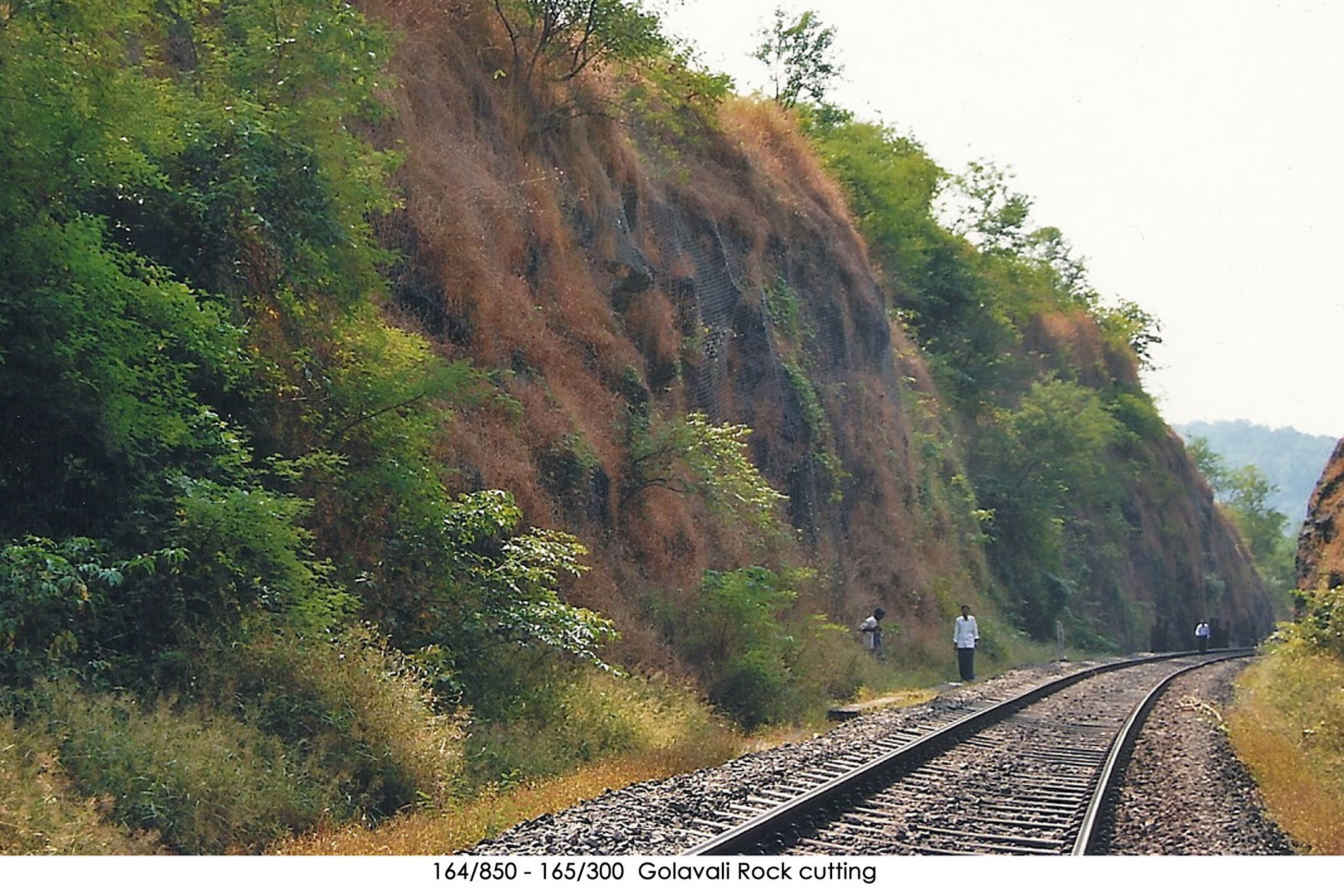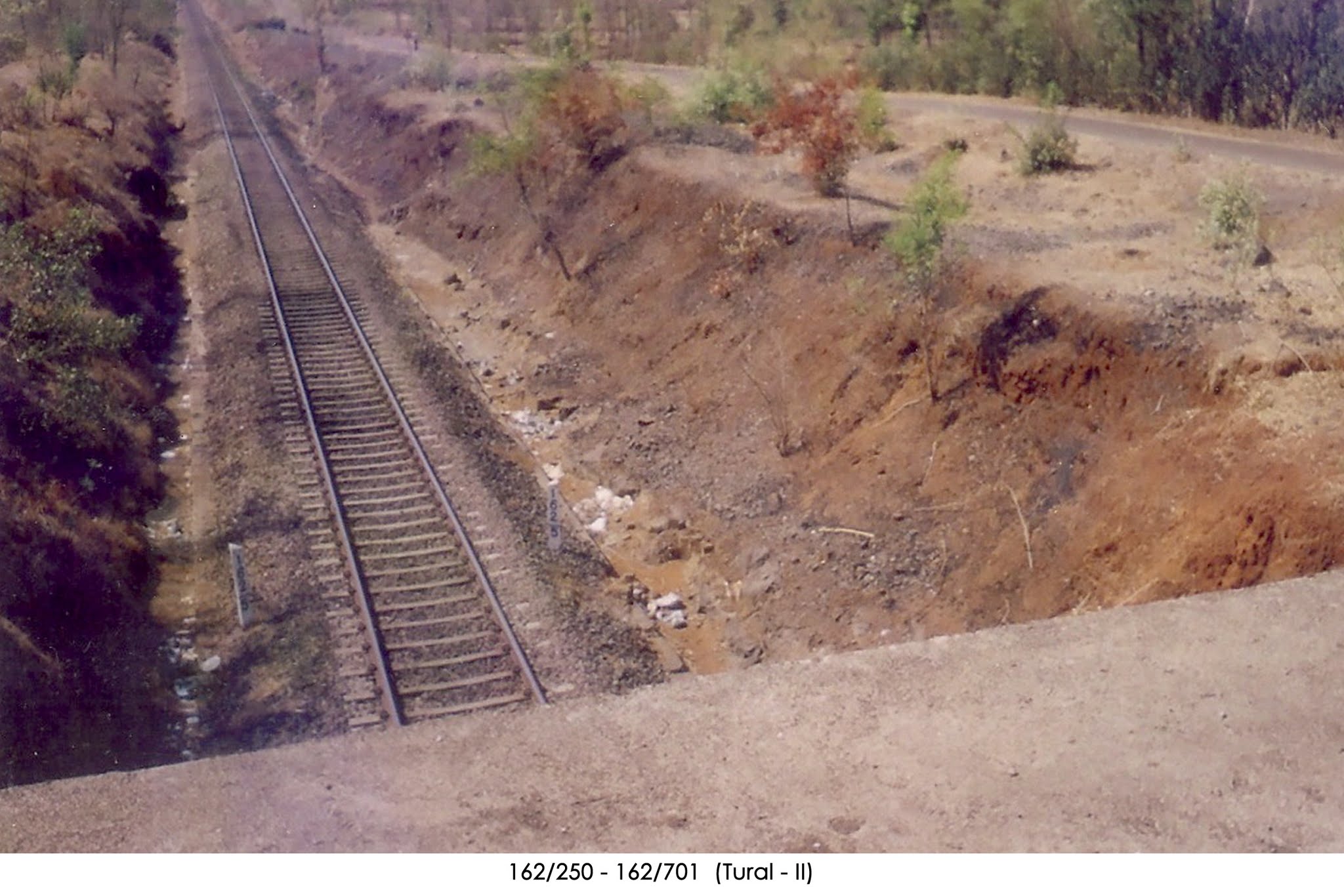Land Acquisition
A KIND HEART BELOW A STEELY EXTERIOR
After the alignment was finalized, land had to be acquired — a total of 4,850 hectares spread over 760 km.! In a region that boasted of the longest lawsuit in history — a land dispute that reportedly lasted more than 1,000 years — land acquisition could have been difficult indeed. But though land-related law suits are common in the Konkan, when KRCL began persuading people to give up property that had belonged to their families for generations, many gave it up voluntarily, convinced of the importance of the project. It was their cooperation that made it possible to take possession of the entire land required in the first year itself. It is rare to see such positive emotional involvement of locals in an infrastructure project of such magnitude. Reciprocating this gesture, Konkan Railway too adopted a policy of giving first preference to the land losers of the KRCL project while recruiting in the Corporation or awarding commercial contracts. The goodwill has only helped the Corporation over the years to rise from peak to peak.
Local officials also provided assistance in acquiring land. Mr. Ganesh Walavalkar, the Collector at Alibag, for instance, helped KRCL acquire all the land between Roha and Natuwadi on consent. Of the 50 to 60 villages affected in Maharashtra, there were problems only in five — Kolad, Rawdhal, Mangaon, Gote and Khed. But these were quickly solved, thanks to persuasion, official help and speedy compensation.
 Obtaining clearances for vast forest lands in Karnataka from the Ministry of Environment was also a daunting task but dealt deftly so that all clearances from the state and Central government were speedily obtained in the very first year. During this time, 42,000 landowners were called upon and land at a cost of Rs. 144.88 crore was negotiated. Village-level meetings were conducted, to make land owners aware of the importance of the national project, and many were so convinced that they gave consent letters much before they received the compensation, so that work could start immediately. Their confidence was boosted by the fact that when the cheques did come, they were delivered to the people’s doorsteps.Strangely, while trying to track down land owners, KRCL discovered that some people were not even aware that they owned land in the Konkan.
Obtaining clearances for vast forest lands in Karnataka from the Ministry of Environment was also a daunting task but dealt deftly so that all clearances from the state and Central government were speedily obtained in the very first year. During this time, 42,000 landowners were called upon and land at a cost of Rs. 144.88 crore was negotiated. Village-level meetings were conducted, to make land owners aware of the importance of the national project, and many were so convinced that they gave consent letters much before they received the compensation, so that work could start immediately. Their confidence was boosted by the fact that when the cheques did come, they were delivered to the people’s doorsteps.Strangely, while trying to track down land owners, KRCL discovered that some people were not even aware that they owned land in the Konkan.
At least half a dozen people were found who had inherited land but were unaware of it, since their families had neglected to do the paper work. KRCL helped them in completing the legal formalities, and paid them the compensation that was due.
Compensation was provided, based on the stated value, and the number, variety and age of the trees on it — a single mango tree fetched anything from Rs. 2,000 to Rs. 10,000, cashew trees were valued at a minimum of Rs. 1,000, and jackfruit at Rs. 2,000. KRCL also helped in resettlement, paying for alternative accommodation for six months, providing trucks to shift belongings, and assisting landowners in the selection of alternative plots and the permissions required for converting them to non-agricultural use. Since the beneficiary provinces were partners in the Konkan Railway Corporation, civil authorities provided help where required, and this expedited the possession of land. KRCL also allowed people to take away material like doors, windows, and other useful material from their dismantled dwellings. In several cases, jobs were provided to those who had parted with their land.
In order to minimise the hardship, KRCL avoided cutting habitats wherever possible, and also tried their best to ensure that heritage, religious and community structures were untouched. Care was also taken to acquire minimum possible land so that the ecology and natural heritage was affected as little as possible. In addition, farmers and their fields were provided with easy communication passages along the railway line. Forecasting of floods of catchment areas was based on a 100 year return period, and waterways for bridges and culverts were strictly based on these requirements. And in cases where people complained that their water supply had dried up — at Amaiwada, for instance, a village at the top of the Pernem tunnel hillock — a water supply scheme was started. At Chapdi, near Veer, a well was constructed for villagers, when an embankment blocked their path to an existing well. In Mahad, open wells and tube wells were constructed. Several other welfare activities led to quick completion of the task at hand; when two village women at Mangaon obstructed work by refusing to get out of a trench dug up for the foundation of a road underbridge, their problem was solved by the provision of an approach road. Thanks to such measures, the Roha-Veer section could be completed in just two years.
In the process of acquiring land, personal relationships played a large role as well. In Goa, for instance, with its culture and atmosphere of easy conviviality, engineers were given special allowances to socialize with local people, and gain their confidence.The job was indeed a daunting one. The strict enforcement of parameters of having the alignment as straight as possible, restricting the curvatures to a minimum radius of 1250 m. and gradients to 1 in 150 meant long tunnels, tall viaducts, high embankments and deep cuttings. These were the engineering challenges that the Konkan Railway team perceived, but several others were to follow during the course of construction! Panvalnadi Viaduct.
THE GOA CONTROVERSY
 The situation was not made easier by the fact that KRCL had to deal with court battles in Goa. Though the alignment in this State had been finalized after comprehensive environmental impact studies, and approvals from the state government,, aggrieved citizens’ groups agitated for an alternate rail alignment in 1991, by diverting the planned coastal route to the verdant and ore-rich hinterland taluks of Bicholim and Ponda. The Ministry of Railways appointed Mr. M. Menezes, Chairman (Retd.), Railway Board, to give his opinion. His view, based on extensive investigations into the alignment, and on interaction with the local people and Government authorities, was that the approved alignment was the one worth adopting.
The situation was not made easier by the fact that KRCL had to deal with court battles in Goa. Though the alignment in this State had been finalized after comprehensive environmental impact studies, and approvals from the state government,, aggrieved citizens’ groups agitated for an alternate rail alignment in 1991, by diverting the planned coastal route to the verdant and ore-rich hinterland taluks of Bicholim and Ponda. The Ministry of Railways appointed Mr. M. Menezes, Chairman (Retd.), Railway Board, to give his opinion. His view, based on extensive investigations into the alignment, and on interaction with the local people and Government authorities, was that the approved alignment was the one worth adopting.
Despite this, the protests continued. A writ petition was filed by the Goa Foundation in the Panaji Bench of the Mumbai High Court stating that the alignment violated provisions of the Environmental Protection Act 1986. The petition was heard on April 24, 1992, and dismissed with cost. The Goa government approached the Ministry of Environment and Forests for clearing the proposal of diversion of 36 hectares of forest land in Goa for the Railway. The Ministry of Environment appointed a 15-member committee comprising representatives from the State Governments, the Ministry of Railways, and Archaeological Survey, among others. The committee, under the chairpersonship of Dr. (Mrs.) Kamala Chaudhary, was to examine the environmental and heritage issues involved. But since some members had already taken a rigid stand against the alignment, the Ministry of Railways declined to associate with the committee. The government of Goa also did not participate since the matter had already been decided by the judiciary and discussed in the Assembly. The committee, however, proceeded with its work, and gave its report in October 1992, on behalf of eight members, including the chairperson, approving the alignment. Some members on the committee did not agree with the majority findings, and they gave a separate report suggesting a midland alignment. The protests continued, more cases went to court.
 KRCL was victorious in most of this litigation, but work had to be stopped for nine valuable months after the Government of India ordered a suspension in the Mayem-Bali section in March 1993. It could only recommence after the recommendations of a highlevel inquiry committee headed by Chief Justice (Retd.) Mr. G.J. Oza, which were accepted by the Central Government later that year. Mr. Justice Oza, while confirming the alignment as adopted by KRCL, recommended certain additional inputs such as an increase in bridge openings, road crossing and landscaping. These recommendations were implemented in toto, and involved an additional cost of Rs. 28 crore.”
KRCL was victorious in most of this litigation, but work had to be stopped for nine valuable months after the Government of India ordered a suspension in the Mayem-Bali section in March 1993. It could only recommence after the recommendations of a highlevel inquiry committee headed by Chief Justice (Retd.) Mr. G.J. Oza, which were accepted by the Central Government later that year. Mr. Justice Oza, while confirming the alignment as adopted by KRCL, recommended certain additional inputs such as an increase in bridge openings, road crossing and landscaping. These recommendations were implemented in toto, and involved an additional cost of Rs. 28 crore.”
The irony of the situation is that when the Railway line actually did come through, the protestors had changed their tune. Where once they had agitated against the building of the Railway, they were now agitating for more stations along the route and those who did not want the railway line near their house, now wish the railway line can be extended to pass by their houses!













